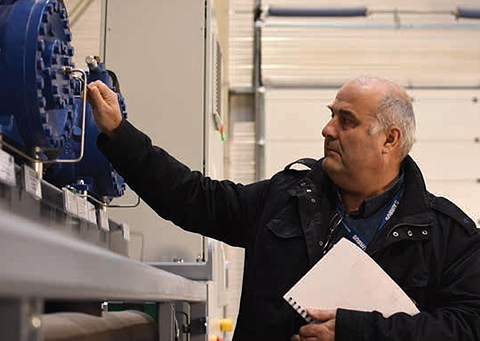 Eco-efficiency of aviation and of the industry.
Eco-efficiency of aviation and of the industry.
Not just because we are eco-citizens, but because it makes sound business sense.
Alongside with technological innovations that enable Airbus to propose quieter jetliners with reduced fuel consumption, lower noise levels and fewer emissions which also perform at the highest level, reducing aviation’s environmental footprint is one of the company primary challenges. Airbus pursues its road to air transport eco-efficiency, focusing on value and growth generation whilst creating less impact on the environment.
Airbus is engaged in an Industrial transformation to ensure anticipation and preparation for mid-term evolutions of industrial systems as well as the longer term solutions to build the Factories of the Future.
FRANCE, SAINT-NAZAIRE, A350 PAINT BOOTH OPTIMISATION
Across the company's industrial facilities, key reductions have been achieved in energy and water consumption, waste production, VOC (Volatile organic compounds) and CO2 emissions. The priorities are to secure energy supply, improve energy monitoring, identify waste of energy in operations and develop and implement innovative solutions in order to anticipate energy and CO2 trends.
The new A350 paint booths at St-Nazaire is a tangible example of best practice: designed and built to reduce environmental impacts to almost Zero, the project enables a 67% saving in energy use and a 86% reduction in CO2 emission, leading the way for future energy reductions and achieving zero CO2 emisssions from our industrial process.
 EARTH OBSERVATION
EARTH OBSERVATION
Fighting global warming from space sustainable forest management
In the continuity of the Company's approach to fight climate change, Airbus, The Forest Trust (TFT) and SarVision have formed synergy from their knowledge base to develop STARLING, the answer to support efforts to reduce global footprint in terms of deforestation. Using spatial imagery and singular expertise, Starling offers an innovative solution that is effi cient and economical to companies wishing to verify the impact of their actions in the fi eld. The combination of high resolution optical and radar satellites provides objective, frequent and precise observation essential for making informed decisions. Images are captured regularly, for the purposes of monitoring changes in various situations such as supply basins and expansion areas and allowing the various sector actors to ensure proper application of conservation and sustainable development policies.
Tomorrow's new technologies and Innovation remain key drivers to constantly reviewing environmental footprint and reinforcing eco-efficient ways of working.
Contact details:
Audrey Guittard, Environmental Affairs and CSR, AIRBUS
Tel: +33 (0)5 82 05 13 48
Mob: +33 (0)6 38 37 97 14
Email: audrey.guittard@airbus.com